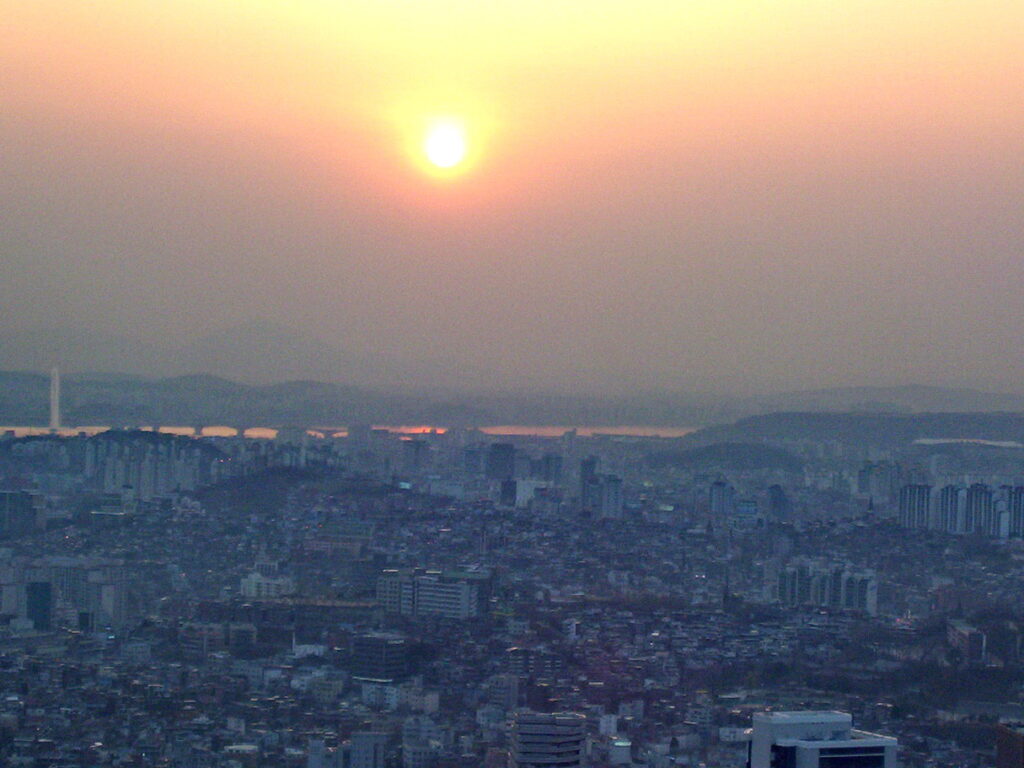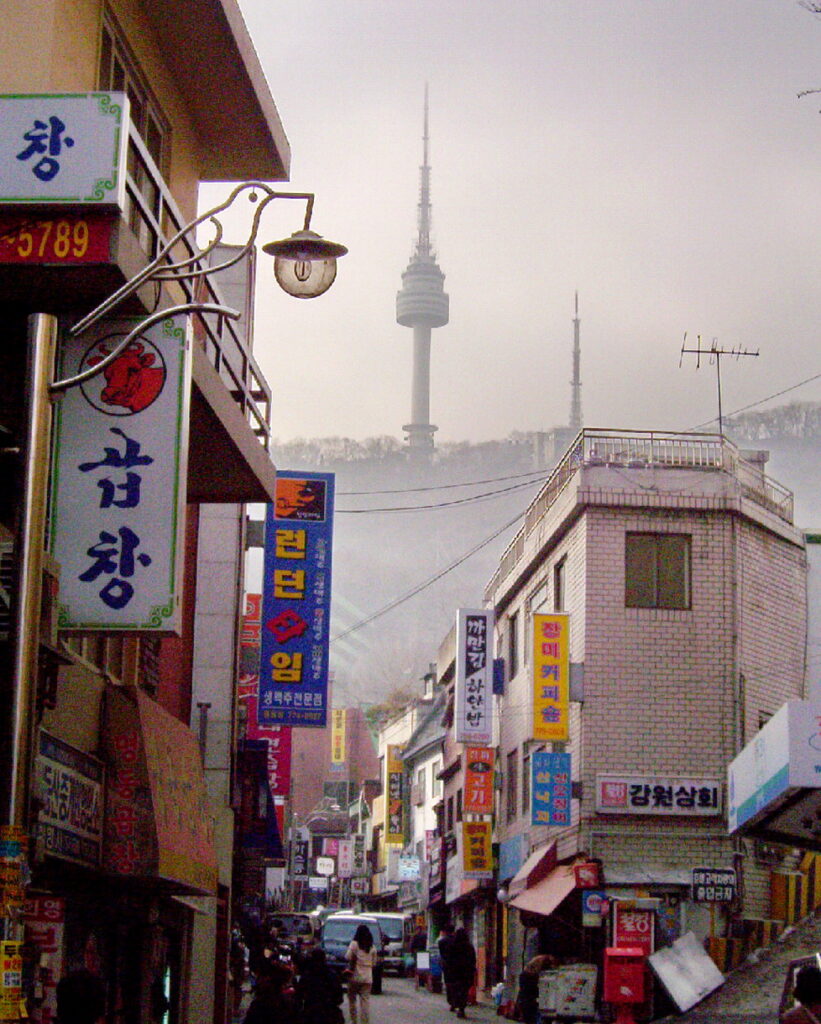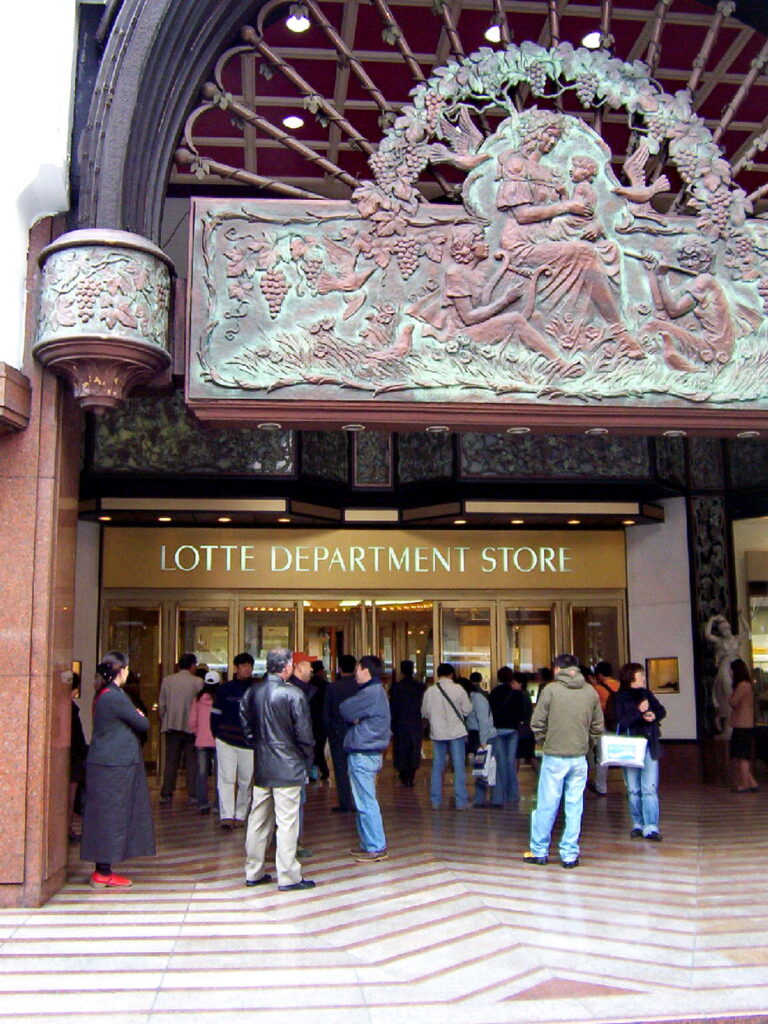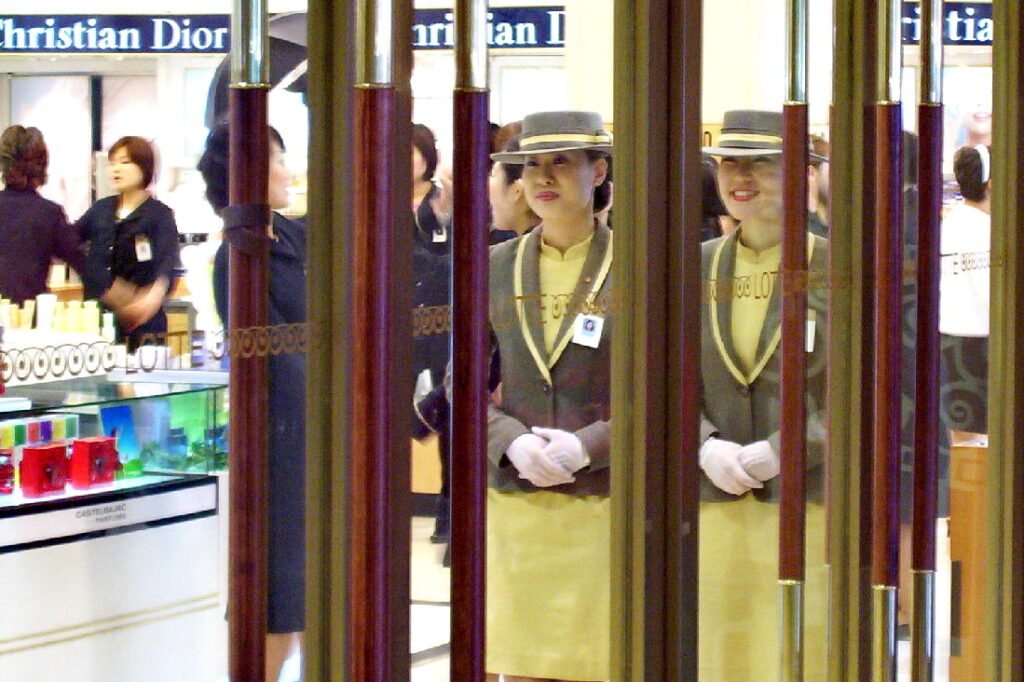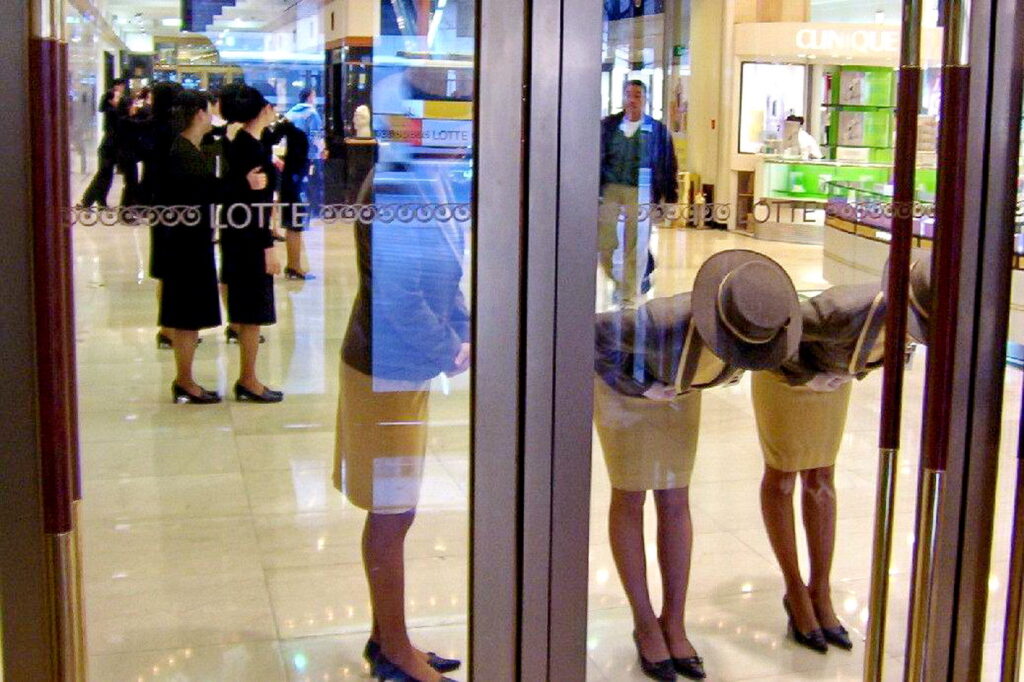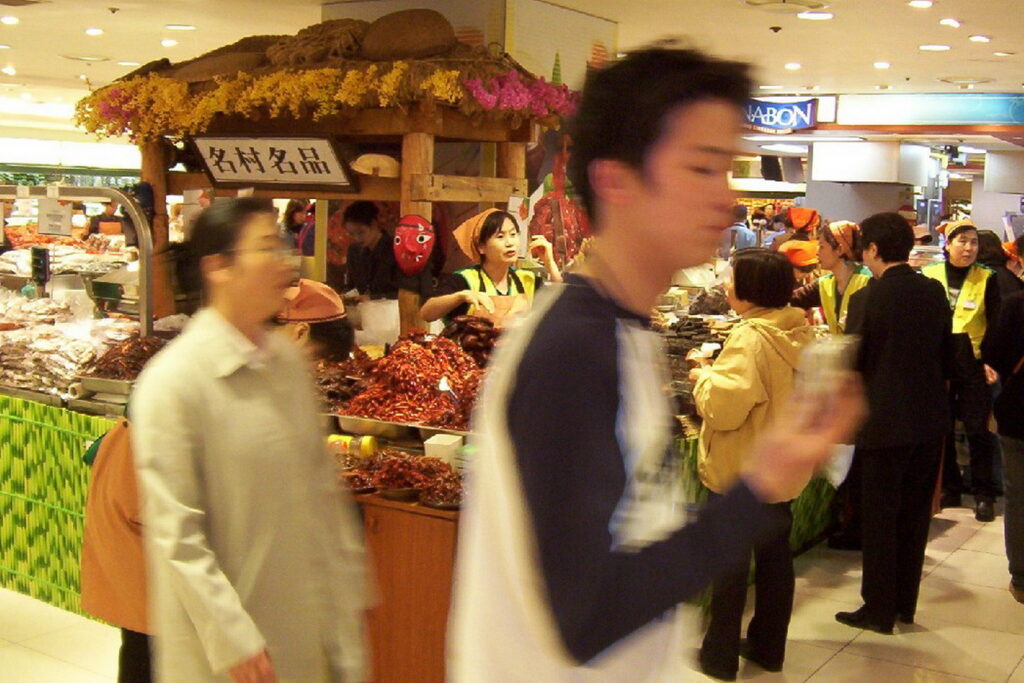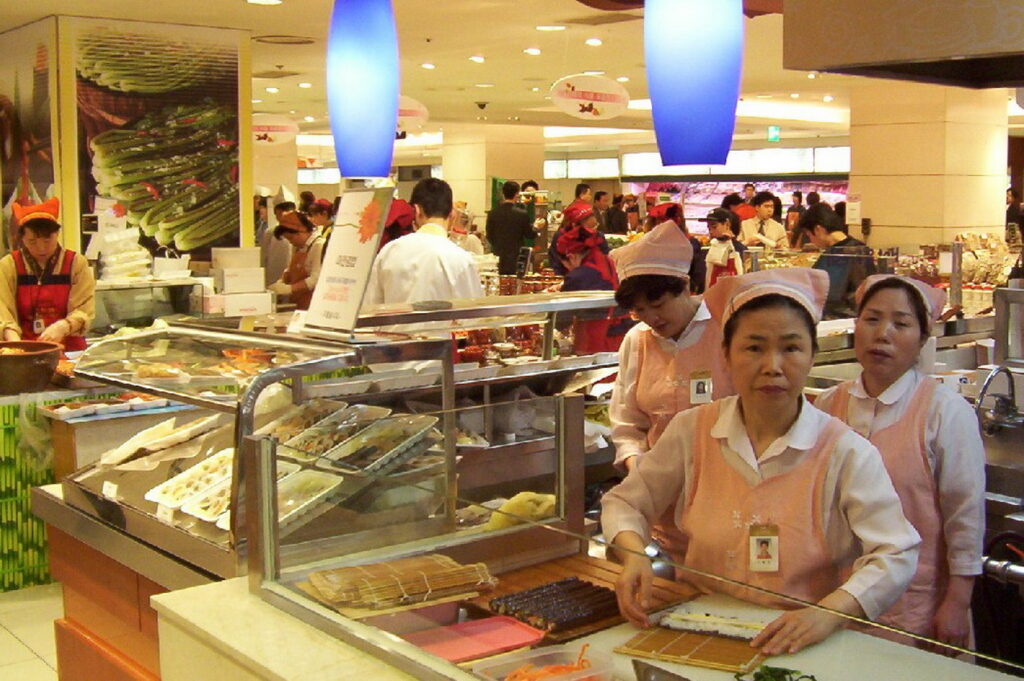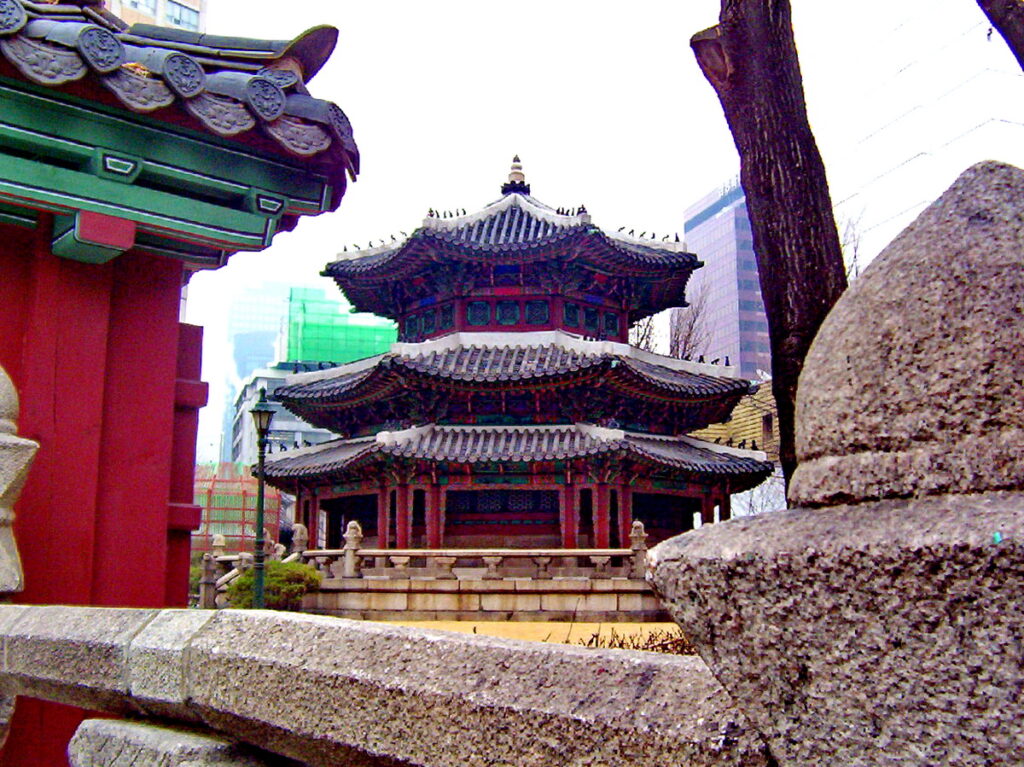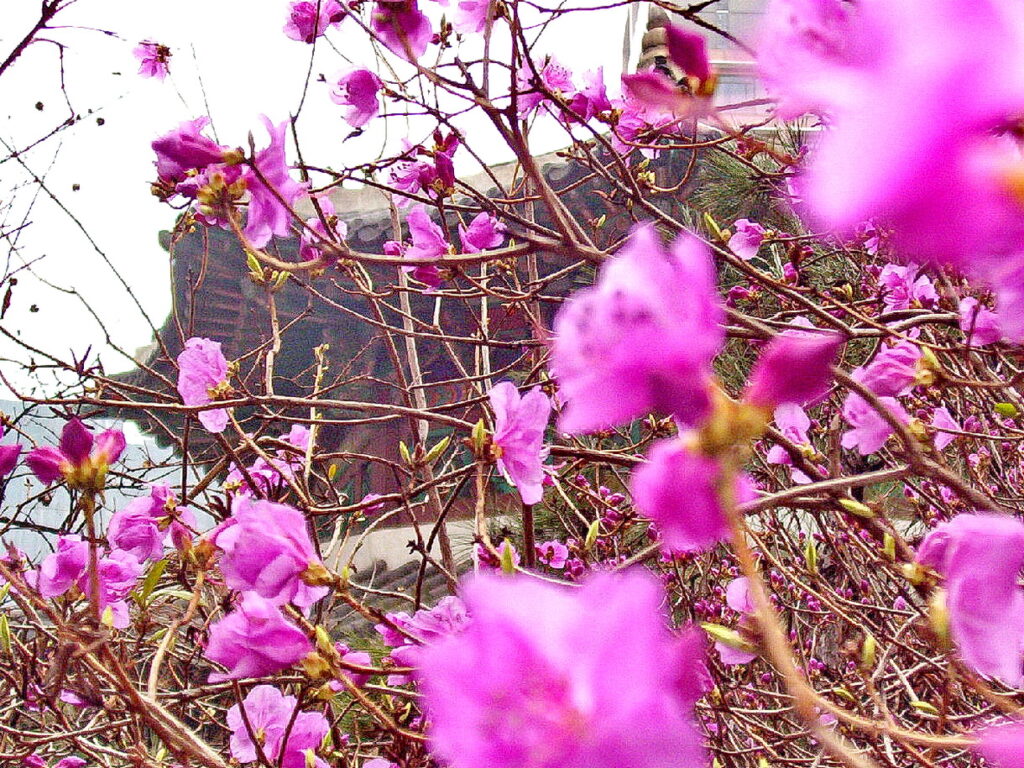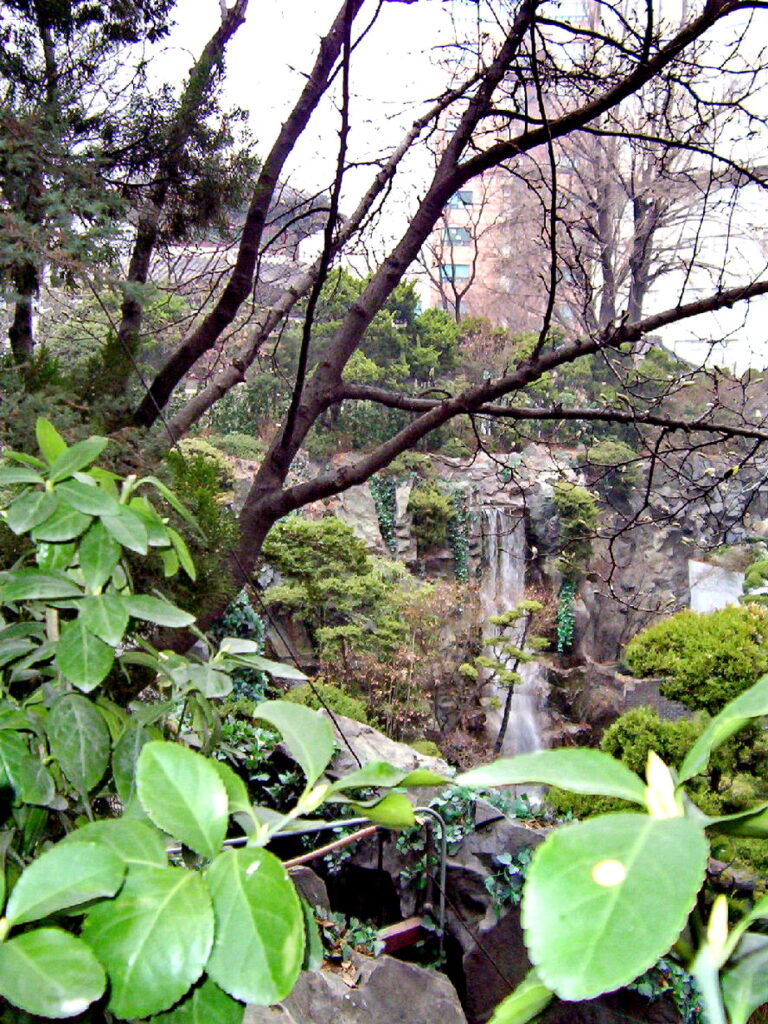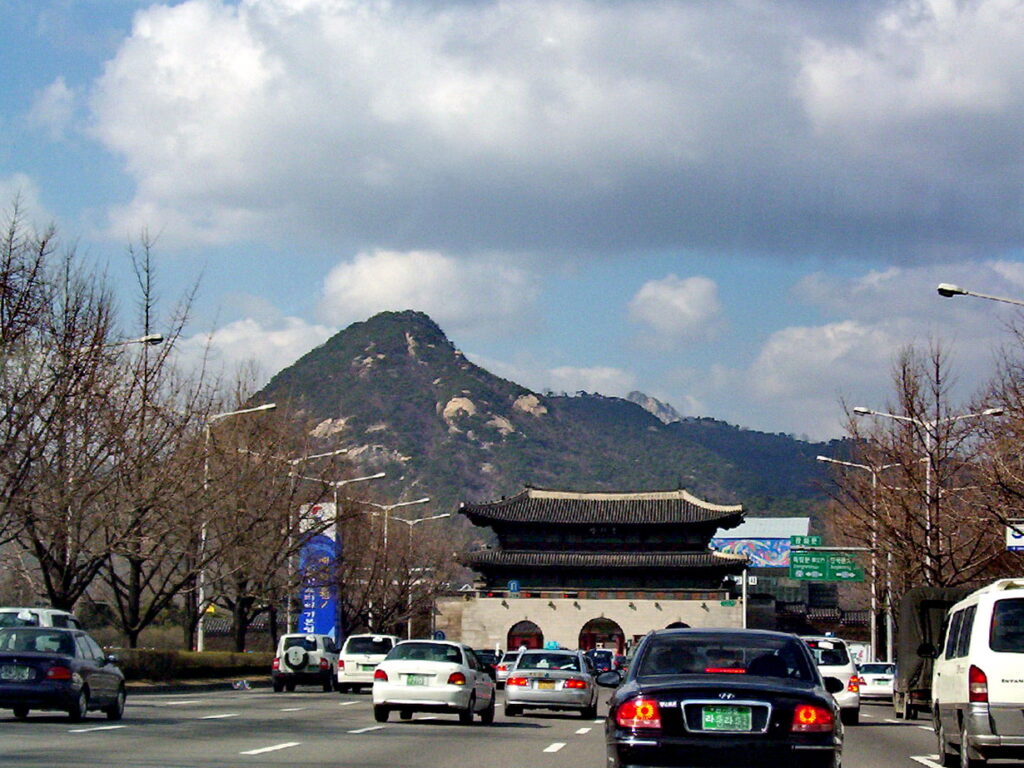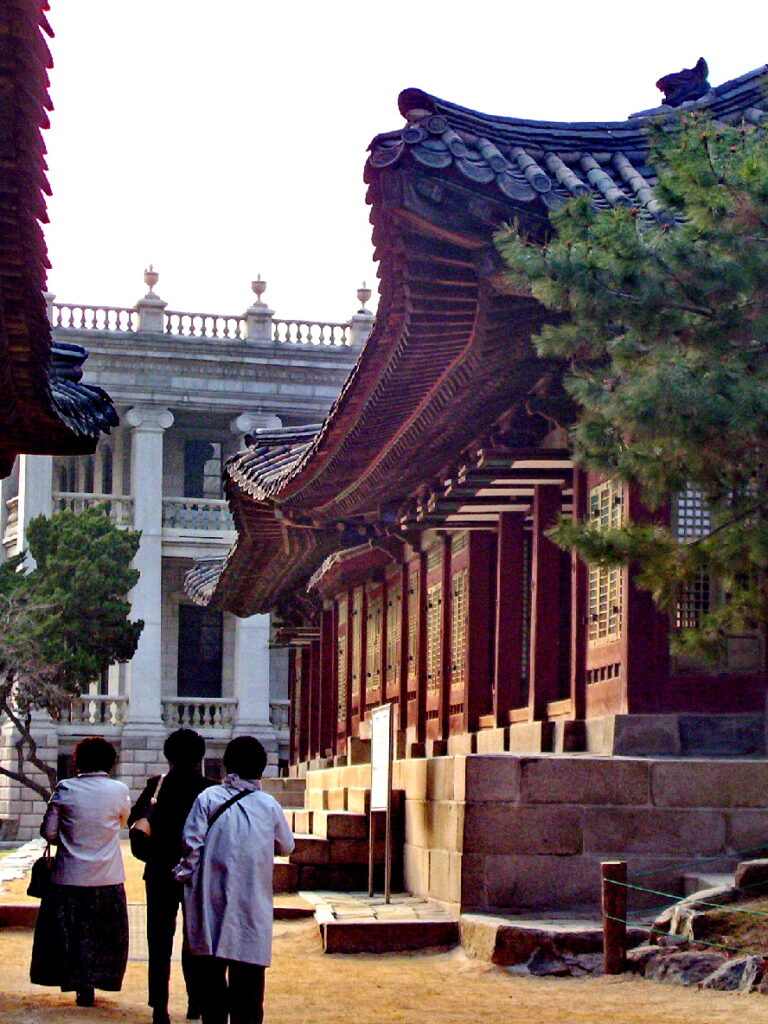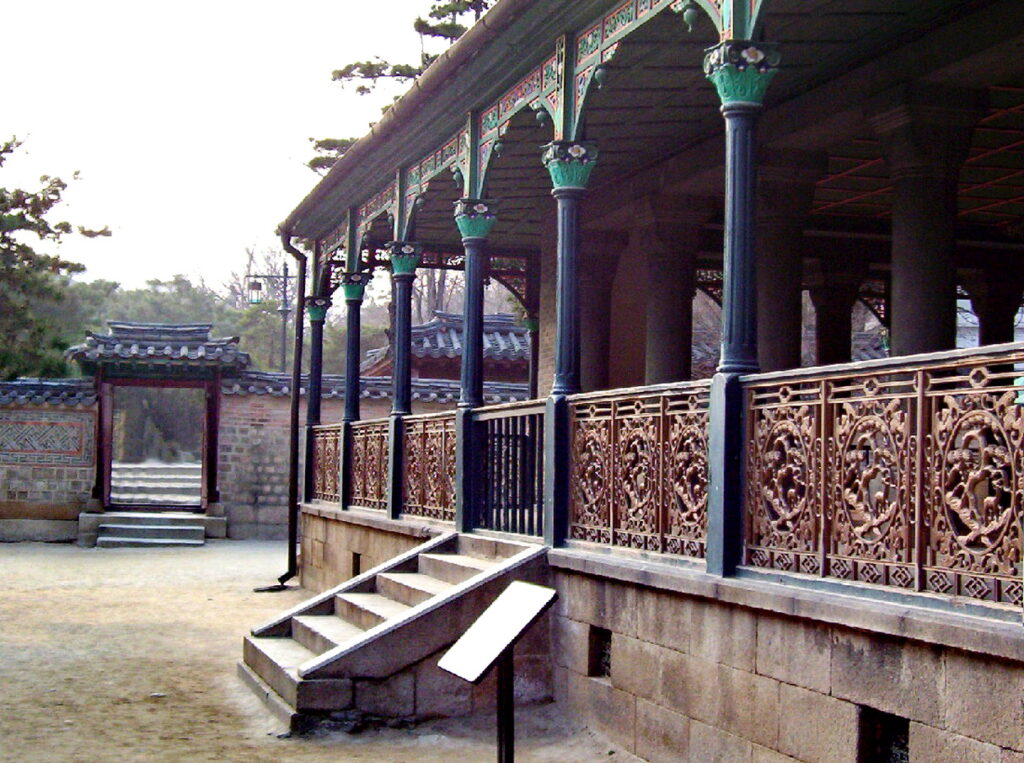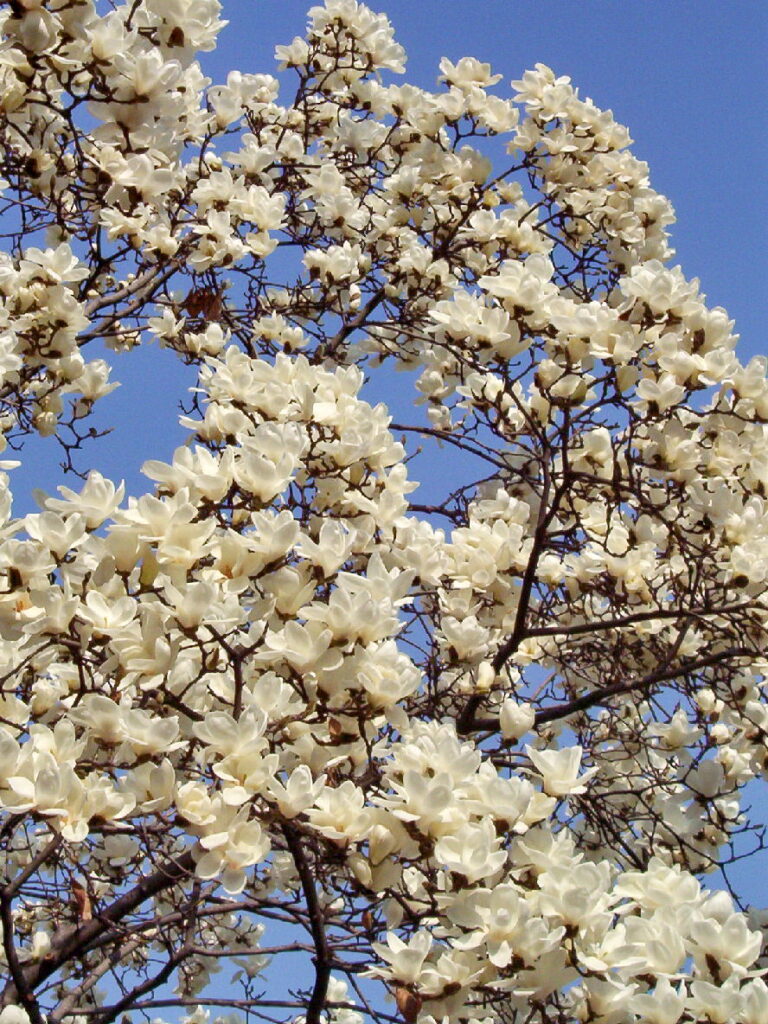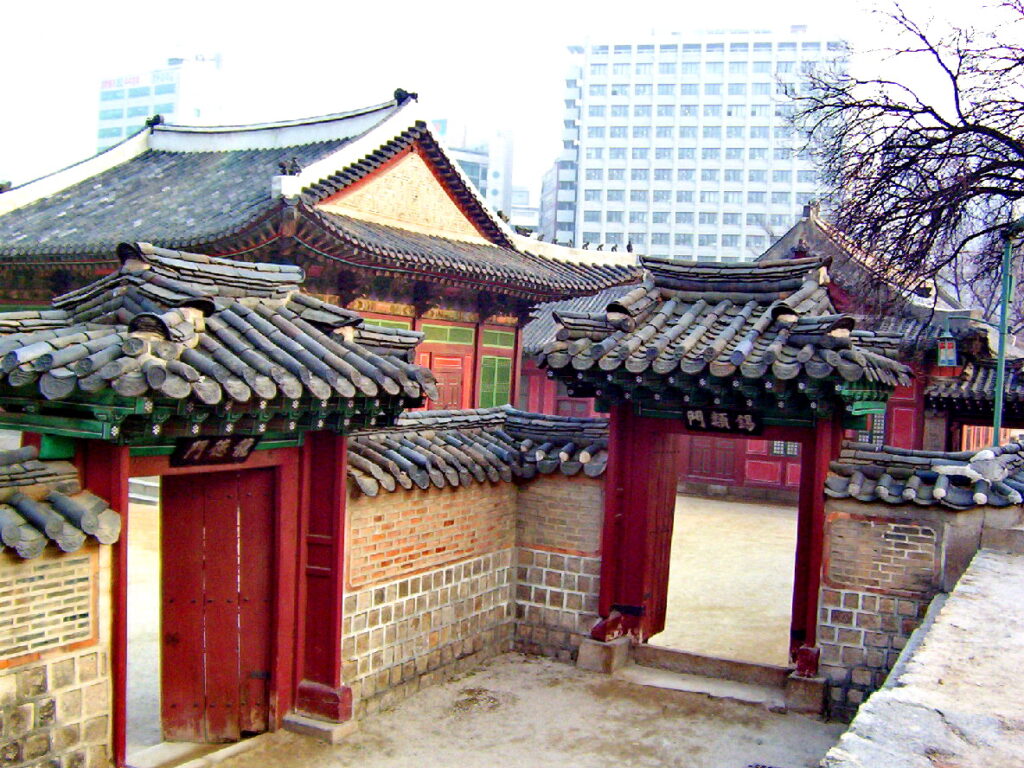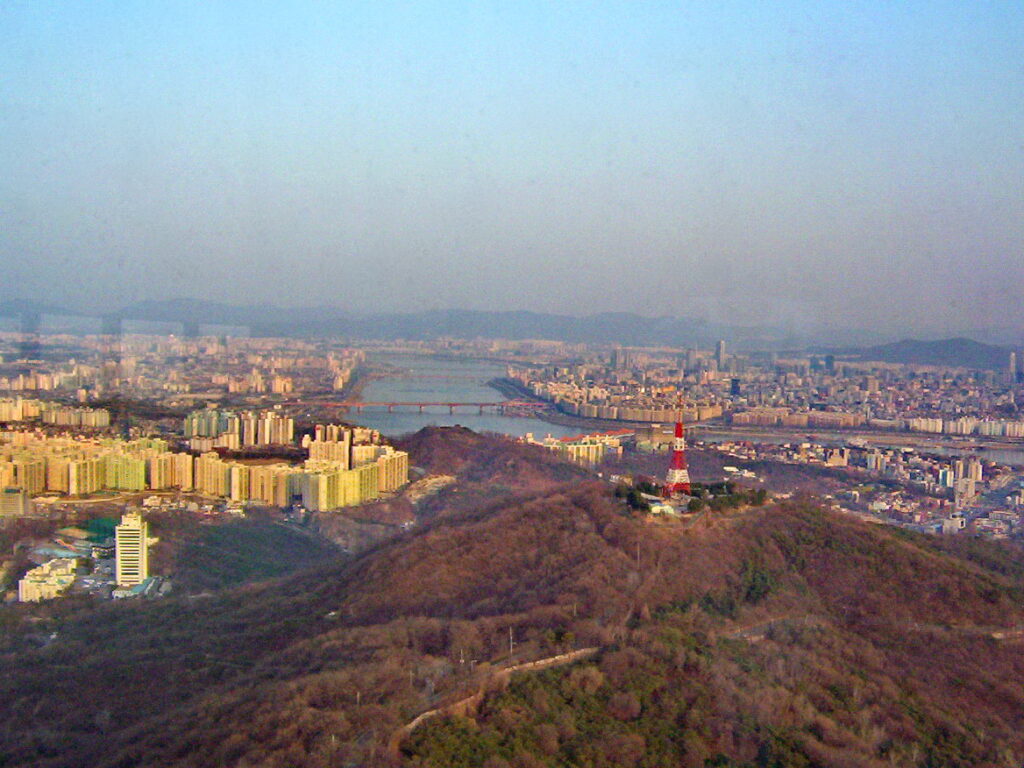A Foggy Stroll Through Ancient History In Seoul, Korea
On our second day in Seoul, South Korea, we found ourselves with a thick fog hanging over the city. Weather aside, it was time to take a walk and visit a couple of the key historic sites of the city.
The N Seoul Tower stood high above us as we made our way through the Myeong-dong shopping district where endless huge billboards lined the streets.
The one store we were most interested in visiting was the Lotte Department Store. As luck would have it, the store was not yet open, so we would get to see the famous door-opening ceremony firsthand.
This was no simple key-in-hand opening ceremony like the ones that many of us have experienced when standing outside waiting for someone to unlock the doors. Here was grace and formal bowing down to the waiting customers.
In Korean culture, a common way to express politeness, respect and gratitude is to bow down. The ladies of Lotte greeted us as they opened the doors with this true sign of respect.
With the doors opened, it was time for us to buy some fruit and water for our walk through the city.
The scenes and general feeling of the Lotte food court brought back memories of the Eaton’s Department Store in our hometown of Toronto, Canada. The Eaton’s food court was also a legend in its day. That Canadian department store is now long gone, along with its history and memorable food court. So the Lotte food court felt like home to us.
Back outside, it was the Hwangudan Altar complex that we visited next. This site is where the rite of heaven was performed by the Emperor of Korea to demonstrate his absolute sovereignty.
When at the Hwangudan Altar, the spring blossoms were just beginning to open. A hundred years earlier on the day of the winter solstice, the Son of Heaven ritual would have been taking place here, demonstrating the Emperor’s absolute power to the Supreme God.
Sitting quietly, we listened to birdsong and the hypnotic sound of falling water from the waterfalls beside the Hwangudan Altar. We were reminded here, not far from North Korea, that nothing lasts forever, not even an ancient empire.
Having spent time inside the Hwangudan Altar, it was time to explore more of the surrounding city.
From many points in Seoul, Mount Bukak is visible. Here it is the backdrop for the Gwanghwamun south gate of the Gyeongbokgung Palace. When we visited, the mountain was not open to the general public owing to an incident in 1968. At that time, 31 North Korean commandos climbed the mountain and attempted to assassinate then-President Park Chun-hee. Mount Bukak was finally reopened to the public in 2022 and is now a popular place to hike.
Seoul spread out far below us when viewed from high atop Namsam Mountain.
Next up on our tour of Seoul was a stop at Gwanghwamun Square to see the statue of King Sejong the Great. Sejong is considered great because he brought about the highest cultural achievements that Korea has ever known. Even today, 1600 years after his death, the phonetic writing system he created is still used to write the Korean language. Many claim to be “Great”, but few including the ones in our own time ever deliver.
“If the people prosper, how can the king not prosper with them? And if the people do not prosper, how may the king prosper without them?” this is a quote from King Sejong the Great, a quote that is fitting for all times and places.
Deoksugung Palace is one of the five Joseon Royal palaces in the heart of Seoul, Korea. This palace was first built in 1592 and was also home to the last emperor of Korea, Gojong. Like so many people living in Seoul, we found this place a quiet location for a walk in the very busy city.
This building, which is part of the Deoksugung Palace, is called Jeoggwangheon and is an outdoor gazebo that was used by Emperor Gojong as his banquet hall. Here, he entertained his guests during the warm months of the year.
On the day we visited Seoul, the weather was far from warm, but the spring blossoms were putting on a good show in the park.
It was fascinating walking among these walls with such interesting rooftops and doors that open onto the Deoksugung Palace grounds. What stories could these walls tell us, and who had passed through these doors?
Seoul proved a rewarding place to spend part of the day. Over the next few days, we would further explore the city, the country and the DMZ.
Frame To Frame – Bob and Jean

